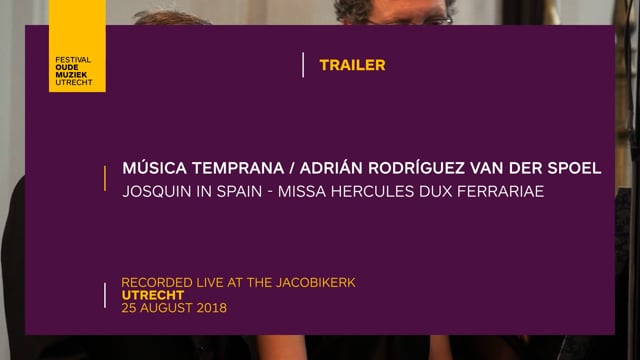Música Temprana
NB: This concert is also available as live stream via EMTV on 29 August. Click here for the live stream. Don't miss out and enjoy a front-row-seat at home.
Why does the San Antonio Abad archive in Cusco house so many lamentations? Did a local tradition exist and if so: why? Did the oppressed people recognise themselves in the lamentations of the prophet Jeremiah? Did Jerusalem’s fate resonate in the ruins left by the colonists?
Cusco was once the capital of the Incas, the Rome of South America. A few decades after the arrival of conquistador Pizarro, a cathedral stood there. The music, too, was European, with lamentations initially following Spanish polyphonic trends, but by around 1750 becoming permeated with Italianisms. Música Temprana presents the results of a heroic round of transcription and reconstruction in its selection of lamentations and villancicos de pasión from Cusco and Sucre.
Programme
-
Anonymous
Lamentación, Miércoles Sancto a 7
Cuzco 18th century -
Juan de Araujo
Lamentación, Miércoles, a 4
1646-1712 -
Anonymous
Responsorios, a 4
In Monte Oliveti
Tristis est anima mea
Ecce vidimus eumCórdoba 18th century -
Anonymous
Lamentación 1ª, Jueves Santo, a 5
Cuzco 18th century -
Anonymous
Stabat Mater: Ane nupaquima suchetaña
Chiquitos 18th century -
Andrés Flores
Con tan tierno llanto, a 2
fl. 1650-1712 -
Anonymous
Lamentación 2ª Miércoles, a 3
Cuzco 18th century -
Anonymous
Lamentación 2ª, Viernes Santo, a 4
Cuzco 18th century -
Tomás de Torrejón y Velasco
Lamentación 1ª Miércoles, a 7
Programme subject to change1644-1728
Musicians
- Lina López, Olalla Alemán soprano
- Victoria Cassano, Luciana Cueto alto
- Jan van Elsacker, Camilo Delgado Díaz tenor
- Pablo Acosta bass
- François de Rudder, Wouter Verschuren dulcian
- Emma Huijsser harp
- Nick Milne viola da gamba
- Jorge López Escribano organ
- Adrián Rodríguez Van der Spoel guitar, musical direction





